
Our client, Raritan Valley Community College (RVCC), asked us to help with a critical student retention campaign. In the past few years, given the pandemic, the school has noticed that many current students are failing to re-enroll for the Fall 2021 semester.
We looked into the numbers nationally and this trend is not specific to New Jersey or RVCC. In fact, we discovered that a staggering 26% of first-time freshmen in Fall 2019 did not return to college for their second year according to the 2021 persistence and retention report from The National Student Clearinghouse® Research Center™. With over 2.5 million first-time freshman students across the U.S, losing 26% means losing 650,000 students last year.
There could be a few reasons for that. Data from different colleges that tracked dropouts indicated that students who left gave the following reasons: “financial,” “academic,” “personal,” and “unknown”. The situation during the pandemic has added family and work challenges schools need to take into account. Remote learning and virtual classes were not expected for many first-time college students.
This decrease in return enrollment is a wake-up call for schools to acknowledge the disruption and take initiatives to retain students. It is more important than ever to keep those students engaged and on track toward their graduation.
This article talks about the marketing challenges and opportunities of retaining students.
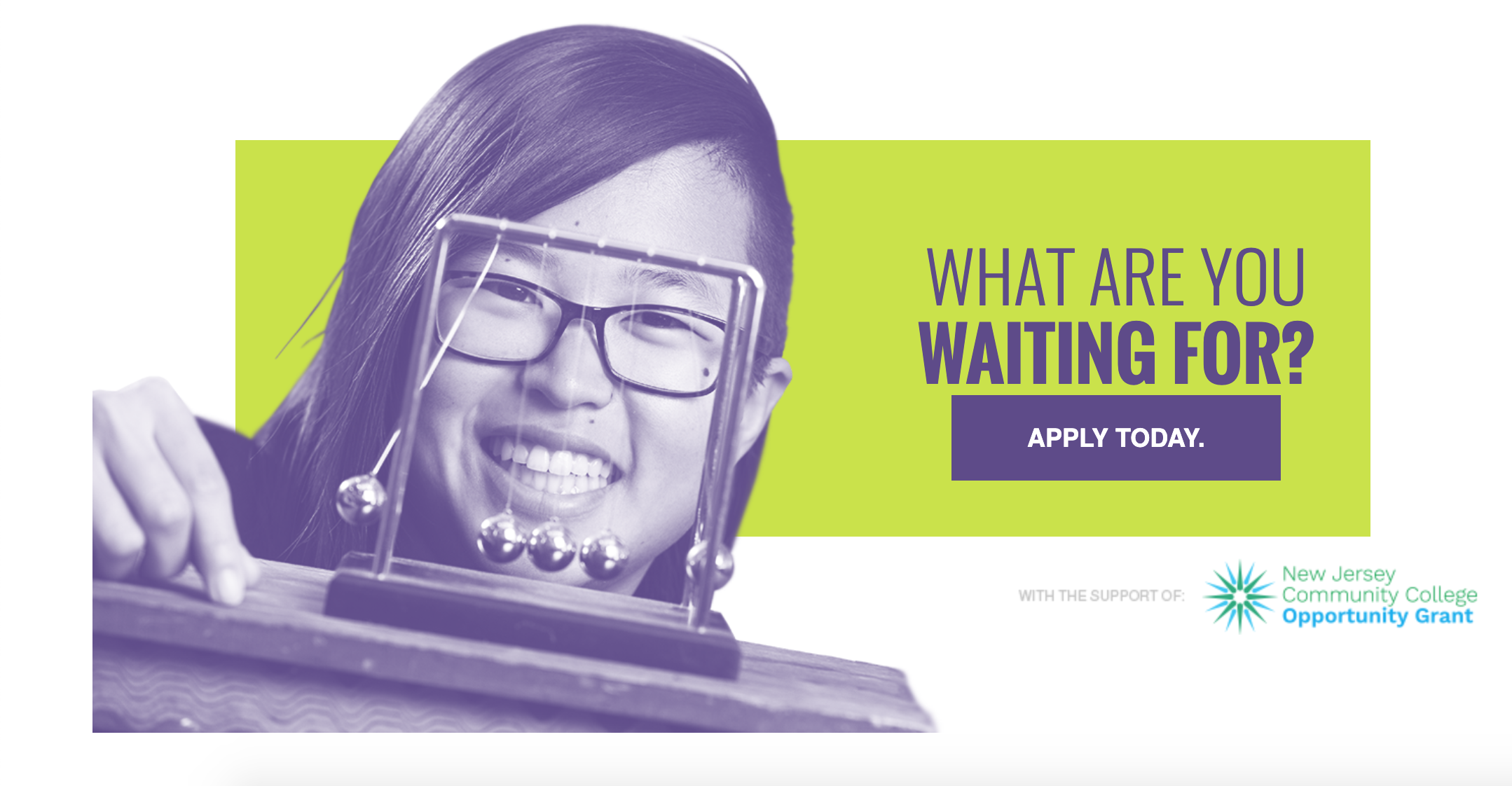
Retention Marketing
Most efforts of higher education marketing campaigns are about reaching prospective students, then motivating them to enroll in the school. While new student enrollments are very important, the retention of students should also be prioritized.
Investing in retention strategies makes a lot of sense, as the cost of student retention is much lower than acquiring a new student. Retaining an existing student also has a higher ROI as current students are the biggest brand ambassadors and can provide the best word-of-mouth advertising for the school. The more students a school retains, the more students will graduate, which is great for the overall outlook and prestige of the school.
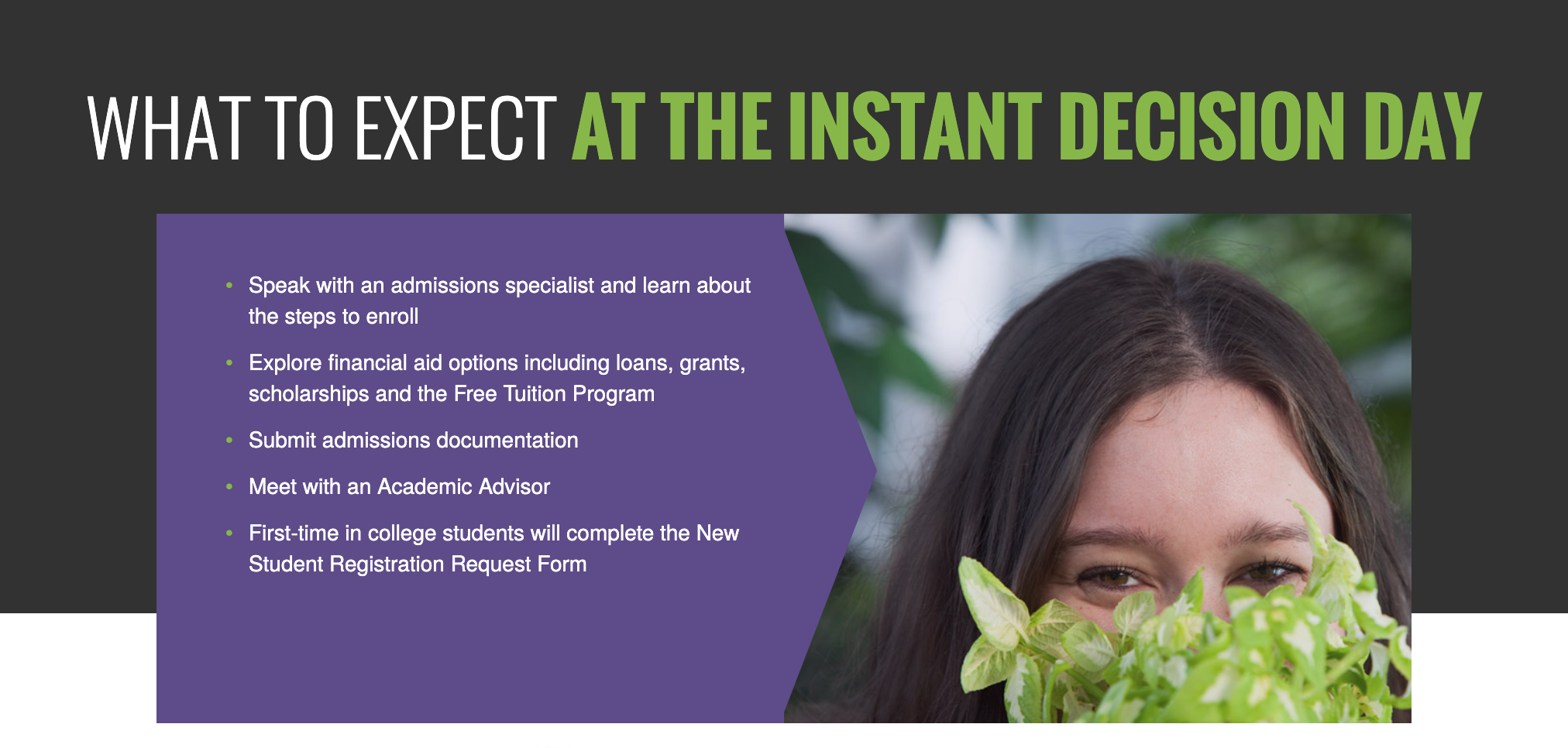
Research shows how important mentorship is to both student recruitment and student retention. The quality and availability of the school’s support services also influence the decision to stay or leave.
Guidance is very important for individuals who feel uncertain about their program choice or their capacity to secure employment after graduation. This is why if your school has not done so, your marketing team should look at implementing guided pathways.
The best way to retain a student is for your school to straighten its student commitment and interactions. Identifying early warning signs and intervening right away is key to helping students cope with setbacks and building helpful strategies to help students stay on track.
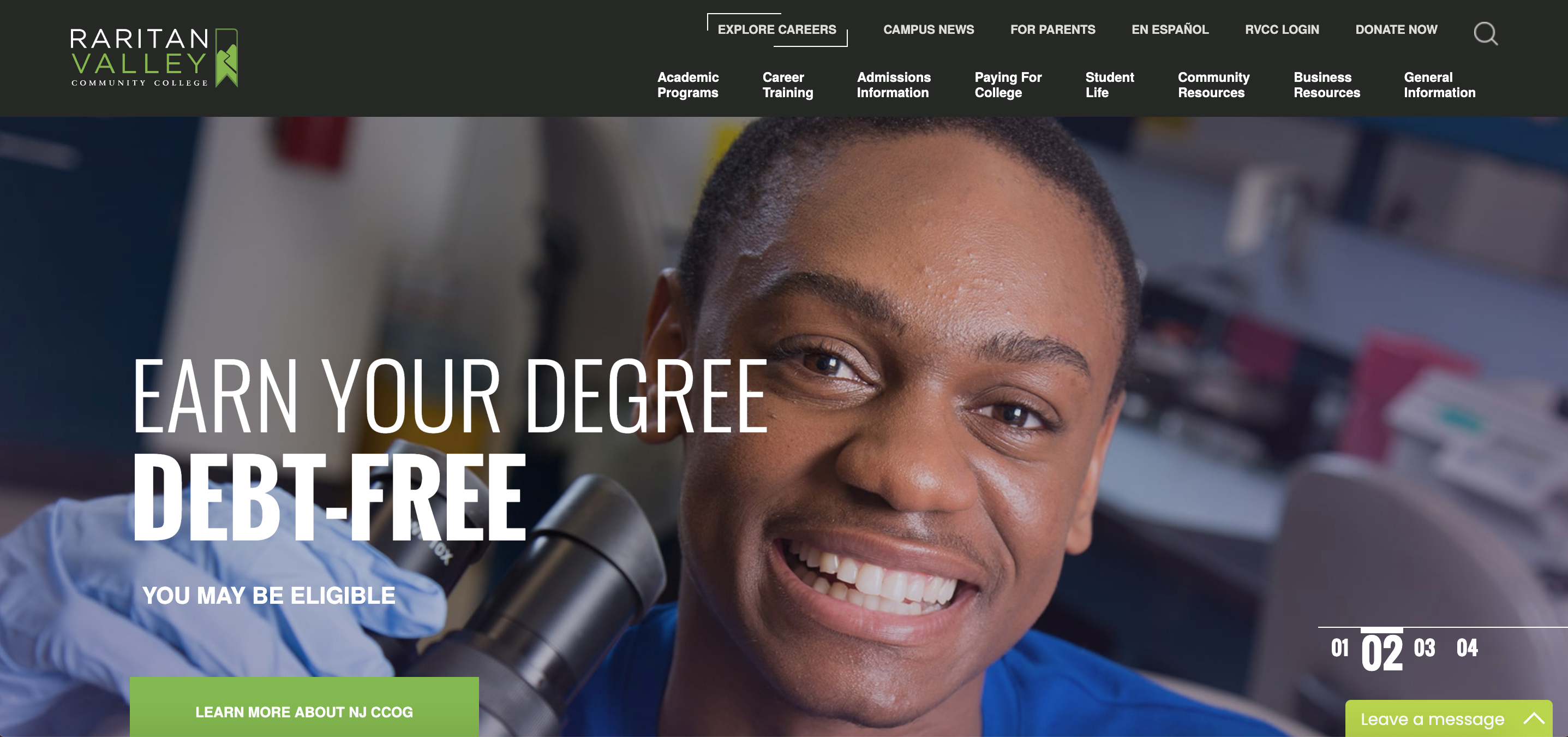
Focus on student personas that are most at risk of dropping out of your institution. According to NSC reports, students who attend part-time are particularly vulnerable to dropping out. With the pandemic and studying online, all students now fall into this vulnerable category.
Retention Campaigns
Retention marketing requires a different type of messaging and channel selection. To engineer a retention campaign, start by examining the challenges and pain points of your target personas and define the specific factors that could jeopardize their capacity or willingness to stay enrolled.
With this goal in mind, RVCC is looking to promote its campus support services regularly. Important resources, such as academic counseling, free tutoring, career planning, and alumni mentorship should be showcased in creative ways– with updates, reminders, and student success.
To retain students, you have to really think about a multi-channel strategy. In the case of RVCC, the school is doing a text message-based survey to reach students that are not enrolled for the upcoming fall semester. The goal is to find out what’s going on and if the school can help in some way. For many, it’s about extending financial aid to full-time and part-time students.
There are currently programs with free tuition eligibility for certain students. Post pandemic, RVCC has added more options now than ever before to help students afford college.
The text message survey is then followed by an email campaign with specific and targeted information following the answers received from each student. The beauty with all of this is having the data, knowing why a student may not be returning, but also their email and phone number. The targeted emails are planned as drip messages and inform students to follow up on their journey to graduation. When a student shares a specific reason why they can’t come back, RVCC is prepared to help.
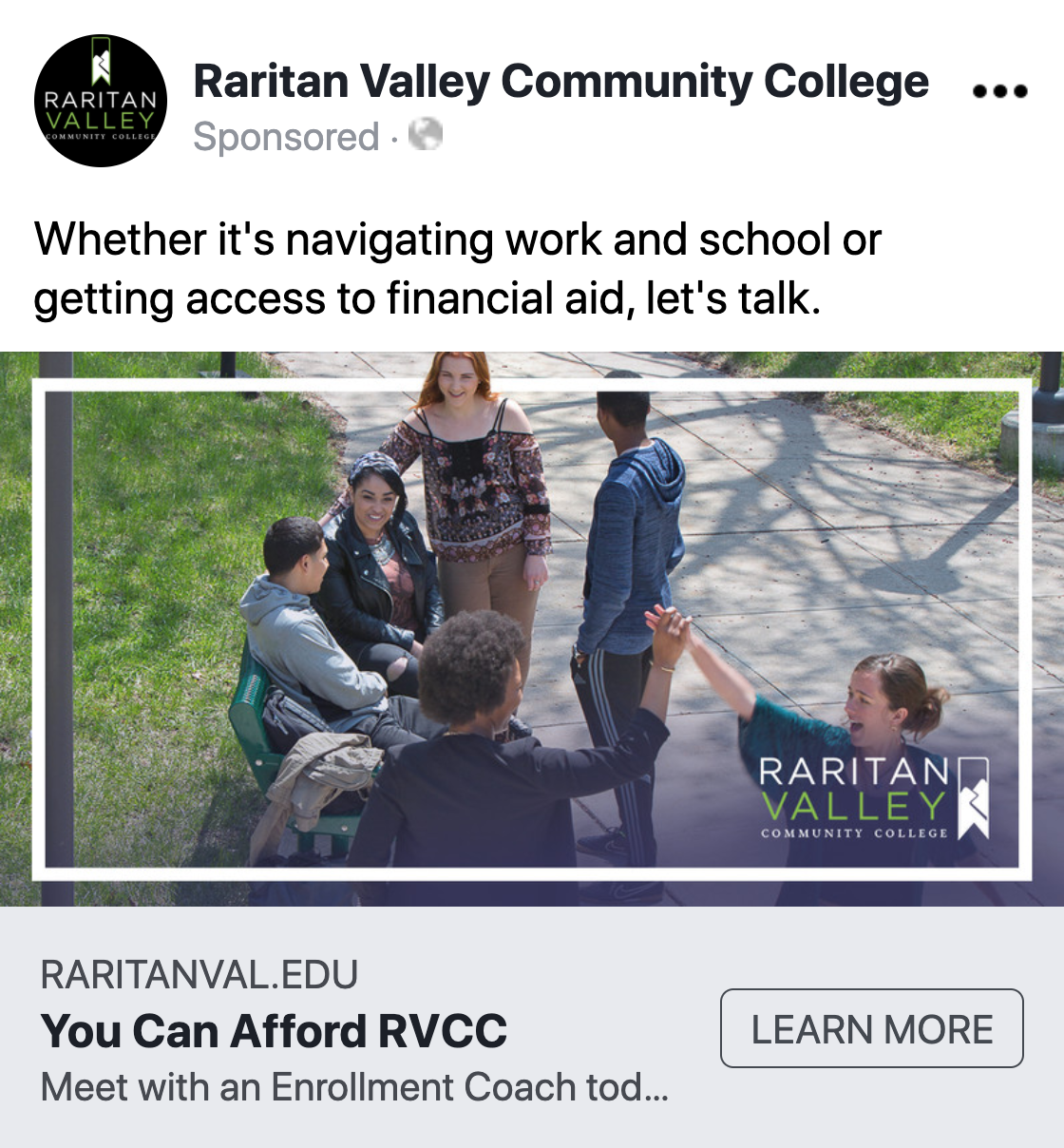 Example of a Facebook campaign the school is promoting hand-in-hand with the other multi-channel strategies.
Example of a Facebook campaign the school is promoting hand-in-hand with the other multi-channel strategies.
Text Messaging Campaign
Campaign example: We miss you. How can we help you get back to RVCC? Tell us why you stopped taking classes.
Answer 1. Can’t afford it
Follow up: Go here https://www.raritanval.edu/paying-for-college/financial-aid-scholarships to check out all the financial aid options including the Free Tuition Program for eligible students
Answer 2. Working instead
Follow up: We have online, evening & fast-track classes. There is financial aid for part-time students. Go here https://www.raritanval.edu/admissions-information/contact-admissions to connect with an enrollment coach.
Answer 3. Attending another school
Follow up: Good luck! We’re here if you need us.
Answer 4. Change in personal or family situation
Follow up: We’ll work with you to fit college into your schedule. There is financial aid for part-time students. Go here https://www.raritanval.edu/admissions-information/contact-admissions to connect with an enrollment coach.

Building and solidifying the ongoing relationship between the students and the school is paramount. Relationship marketing is the best way to create and nurture a loyalty bond and shows good results in student retention strategies. To build this relationship, RVCC sends regular newsletters with campus updates, programs announcements, college news, and student stories.
The third channel we are going to use is social media. Students that have attended RVCC are most likely following the college on Facebook or Instagram for campus news and alerts. This is a great channel to send content and re-enrollment reminders for past and existing students.
These three channels are very important pieces of the marketing effort to retain students.
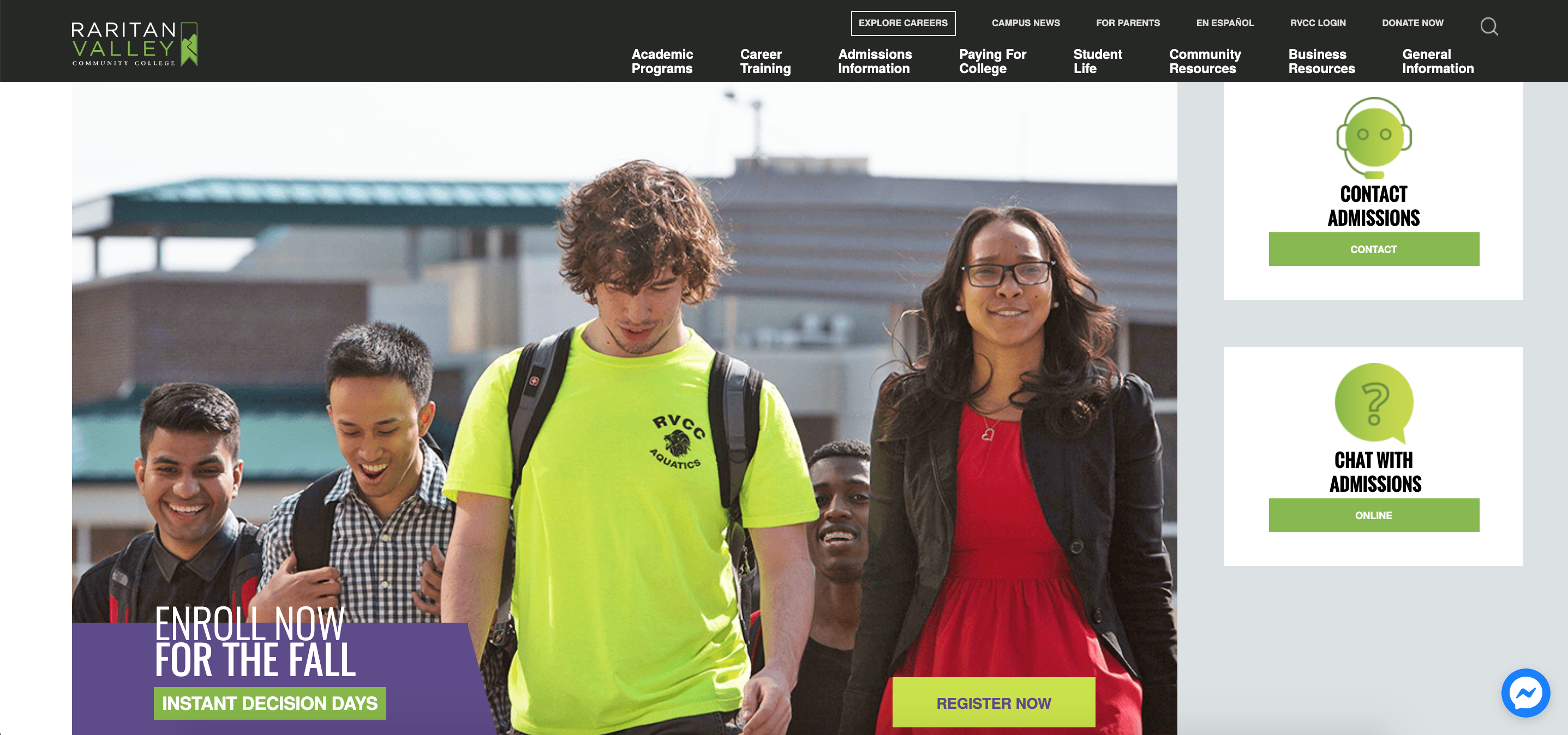
For many community colleges, student dropouts tend to occur within the first six months of year one or during the summer before year two. This is why it’s crucial to plan for student retention campaigns in the first few months of a new student.
When we build a campaign for RVCC, we are always mindful to leverage smart low-cost technologies and craft content to boost the school’s organic website traffic.
Think of every branded communication you send to your students as a great reminder of the value students are getting from studying at your school. Making your campus services more visible and approachable online is an important first step to reaching out and connecting with students at risk of leaving the school.
For advice on how to target, engage, and retain students, just say hello@edesigninteractive.com. Our New Jersey higher ed marketing experts will be happy to connect with your school and audit your marketing efforts.